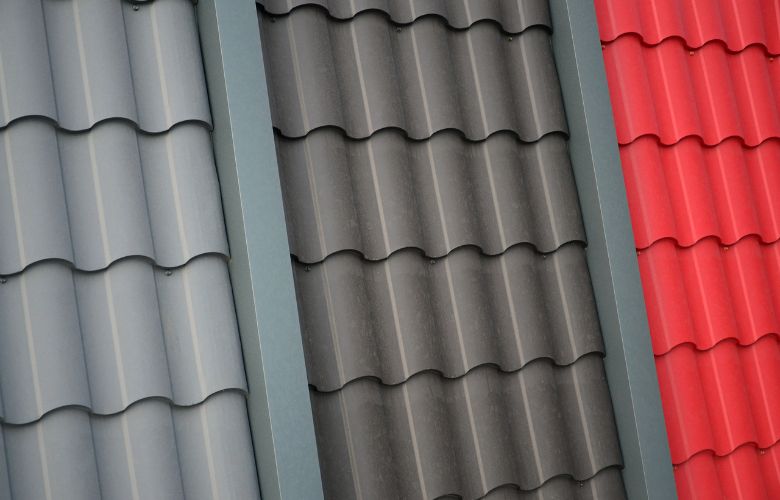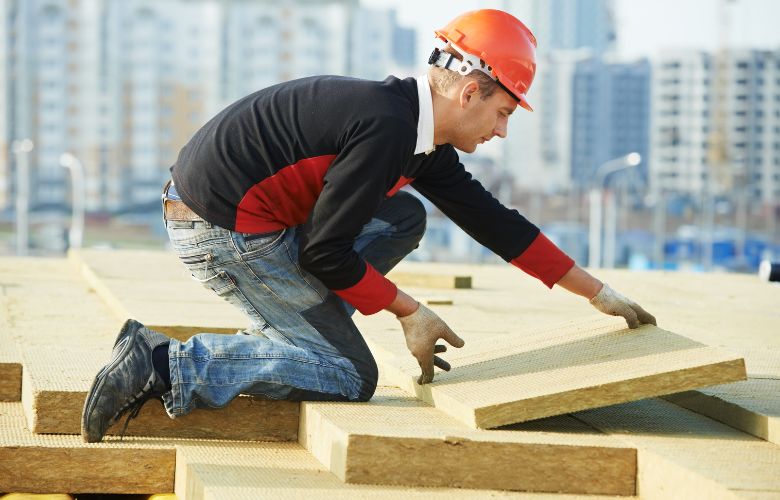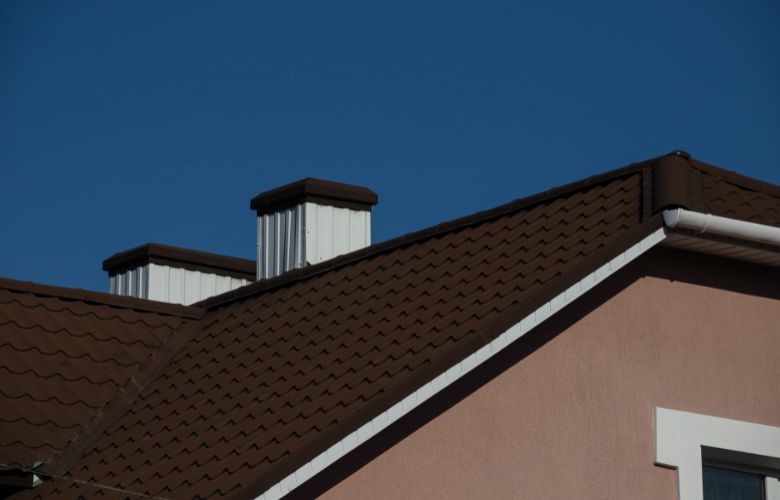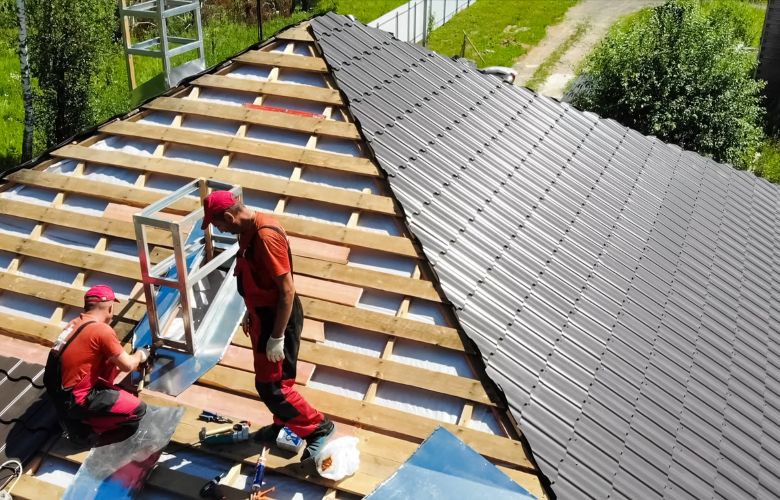It’s rightly said, the choices we make today shape our tomorrow. The same applies to choosing the right roofing materials for your roof restoration project. It affects the integrity and longevity of your roof, ensuring the long-term safety of your home. Further, the right selection of roofing materials also impacts the environment and your pocket.
If you are preparing for your home’s roof restoration project, consider choosing the right roofing materials. It takes a lot of considerations when making a choice between different roof materials, which can be challenging. But worry not!
Roof restoration Melbourne experts share useful insights on choosing the right roof material for a successful roof restoration project.
The blog will explore the importance of choosing the right roofing materials and explains different types of roofing materials and factors that influence your decision.
Why is it important to choose the right roofing material?

Choosing the right roofing material is essential because it directly impacts the longevity, aesthetics and energy efficiency of your home. The right materials can boost structural integrity, providing protection against the harsh climatic conditions of Australia, leaks, and potential damage.
Furthermore, the right roofing material also adds to your property’s curb appeal and overall aesthetics. For instance, concrete tiles come in different sizes, shapes and colours, which allows homeowners to achieve a custom look for their homes.
Installing the right material on your roof also helps save a lot on your heating and cooling bills by maintaining your home’s energy efficiency. The type of roofing material and its colour play crucial roles in regulating indoor temperature and cutting down the need for excessive heating or cooling.
Making an informed decision when selecting the right roofing materials ensures a durable, visually pleasing and efficient roof that protects your investments and enhances the value of your home.
Factors to keep in mind when selecting the right roofing material

There are myriads of modern roofing materials available, each with its pros and cons. This makes the selection process a daunting task. However, you should consider several factors when making the perfect choice.
Consider the aesthetics and style of your property
The roofing material you choose should harmonise with your property’s architectural style and add to its beauty. It should align with your aesthetic preferences. Consider the colour, shape and texture of the roof material and see how it will complement your home’s exterior.
Metal roofing offers a sleek and modern look, while slate provides a timeless and classic appeal. Explore your options thoroughly and imagine how they would boost the overall appearance of your property.
Evaluate weather conditions
Did you know the climate and weather conditions in your region play a crucial role in determining the ideal roofing material? That is because the roof is most exposed to external elements, like rain, wind, plants, trees, etc. As such, it should be durable and strong enough to withstand the complications of extreme weather conditions.
For instance, in regions experiencing frequent heavy rainfall, roofing materials such as tile or slate become more fitting choices due to their exceptional water resistance and extreme durability.
Hence, consider aspects like temperature extremes, exposure to sunlight, average rainfall, and wind intensity in your region. Understand your local weather and climate and choose a roofing material that can withstand the extremity while protecting your property effectively.
Assess budget and cost
Understanding your financial constraints is crucial when selecting a roofing material. Various roof materials come with different costs, which include maintenance and installation expenses.
Colorbond metal roofing is said to be a cost-effective option, providing long-term value due to its energy efficiency and durability. However, slate and tile are expensive roof material options, which may need fewer repairs down the road.
Thus, evaluate your budget and compare the upfront costs with the potential long-term advantages to make a well-informed choice.
Durability and lifespan
No materials have the same longevity and resistance to wear and tear. Slate and tile, for instance, are known for their outstanding durability and can last for several decades. Assess your long-term property goals and choose a roofing material with excellent lifespan and durability.
Expert recommendations
When in doubt, it’s always good to consult professionals who can provide expert guidance as per your specific needs. They can inspect your roof’s condition and offer suggestions on the suitability of various roofing materials.
Different types of roofing materials

Here are the most common types of roofing materials in Australia:
Metal
Made of sheets of galvanised steel, copper or aluminium. Metal roofs are long-lasting and can last for decades without much maintenance.
It is extremely durable and can resist extreme weather like storms, heavy rains, or strong winds. Metal roofs come in various textures and colours, including corrugated, flat and standing seam styles.
However, metal roofs are prone to frequent contraction and expansion as they warm and cool. Also, it’s hard to find an exact match to the existing metal if a home extension is added or roof repair is required. Above all, it’s the noisiest roofing material of all.
| Pros | Cons |
|---|---|
| 1. Long lasting up to 40-70 years | 1. High initial cost |
| 2. Highly durable; will not crack or corrode, impact-resistant. | 2. Noisy during heavy rains or hailstorms. |
| 3. Energy-efficient; can cut down cooling costs up to 10-25%. | 3. Prone to rust in certain climates or if water accumulates anywhere |
Slate
When it comes to making a bold statement, nothing can outshine slate. These are small pieces of rocks beautifully intertwined together to form an overlapping pattern. In terms of durability, slate is the best. If you want a material that you need to install once and never have to look after, then slate is your best bet.
Having a slate roof can enhance the resale value of your property. The natural, colour variations of slate make it an attractive choice and complement with a variety of architectural styles and roof designs.
It also requires little maintenance and can be recycled or reused multiple times. However, these are the heaviest materials and require solid structural support.
| Pros | Cons |
|---|---|
| 1. Long lasting up to a century. | 1. Brittle; can break if walked on. |
| 2.Aesthetically beautiful, it comes in a variety of colours and sizes. | 2. One of the most expensive roof materials. |
| 3. Fire-resistant and recyclable | 3. Heaviest material and need solid structural support. |
Tiles
The biggest advantage of a tiled roof is its versatility. They are available in endless colour options, so you can easily go for the one that matches your property’s look.
Unlike slate, tiles are extremely sturdy and don’t break or crack easily over time. Further, these are low-maintenance roofing materials and require little maintenance. Periodically inspecting and cleaning can make them last long up to 50 years or even more.
However, the tiles are fragile and can crack or break easily. Plus, they have to be replaced individually. Further, their installation and repair are quite a task and require specialised tools and skills.
There are three popular types of tiled roofs, including:
Terracotta
Made from concrete or clay and bonded using cement. While these require low maintenance, they don’t offer much protection against water-related damage.
Concrete
Made from concrete mixed with other materials like steel mesh or fibreglass, making them more robust than clay tiles but less durable than slate roofs. While concrete tiles are more affordable than slate roofs, they require maintenance due to their porous nature.
Clay
Clay tiles are one of the oldest roof materials and have been around for centuries. Made from natural clay deposits, and can withstand extreme weather conditions. These come in many sizes and shapes and can be used for flat or pitched roofs.
| Pros | Cons |
|---|---|
| 1. Long life of up to 50 years or more. | 1. Higher installation cost |
| 2. Require less maintenance | 2. Fragile and can break or crack. |
| 3. Add a traditional look, enhancing the aesthetic appeal | 3. Heavy and need additional structural support. |
Conclusion
Choosing the right roofing material for your roof restoration project is a decision you would make several times. While it may seem daunting, by considering various aforementioned factors, you can make a wise choice, ensuring lasting benefits.
As you now know, a well-chosen roof protects your investments and peace of mind and enhances your property’s overall aesthetics and value.
Take the first step towards a successful roof restoration project by consulting a reputed and experienced roof restoration company and make an informed decision that promises a secure and beautiful home for years to come.


